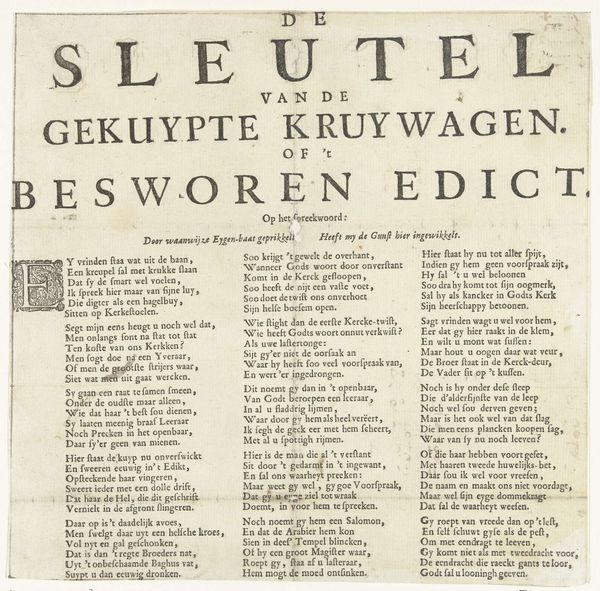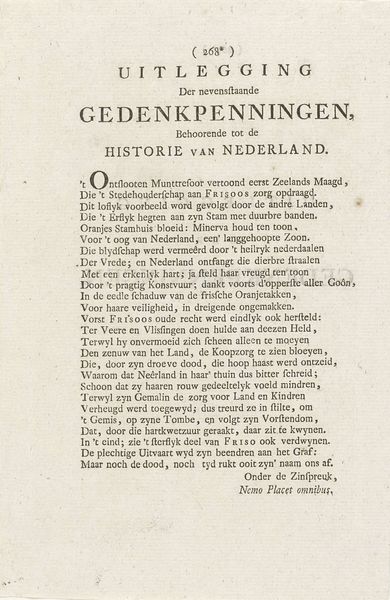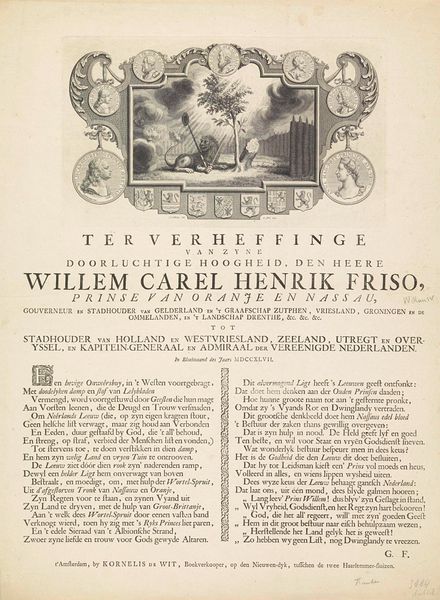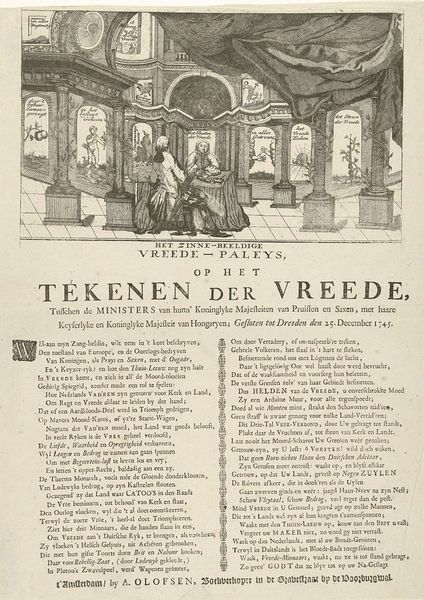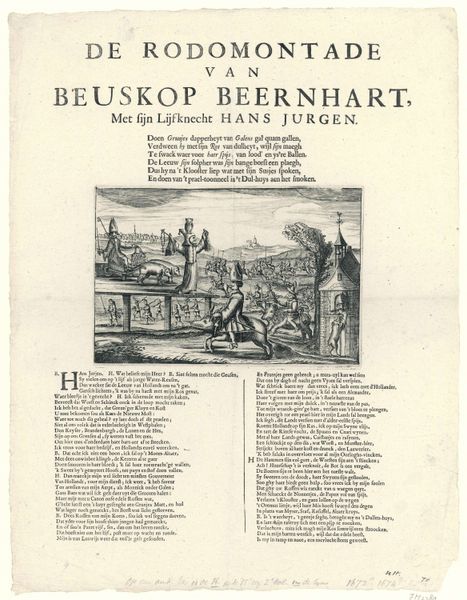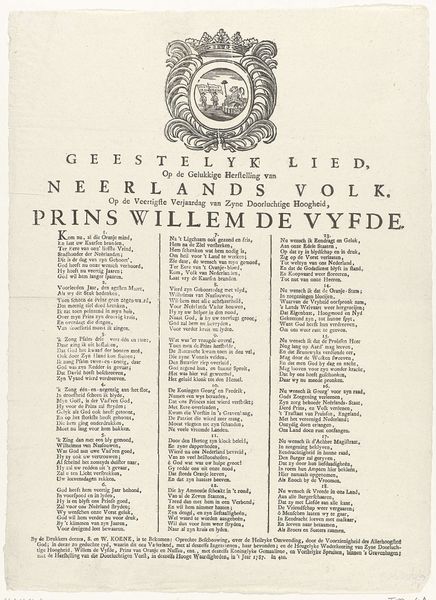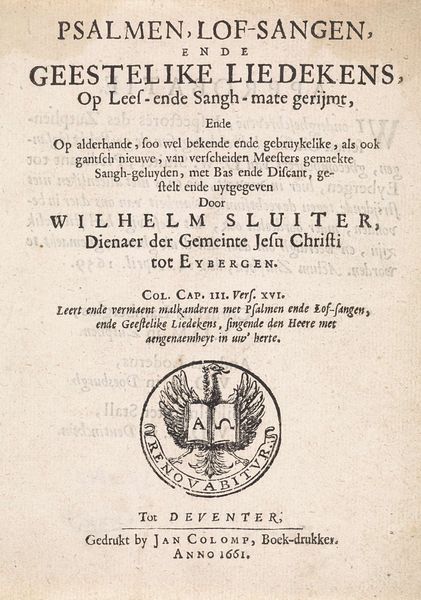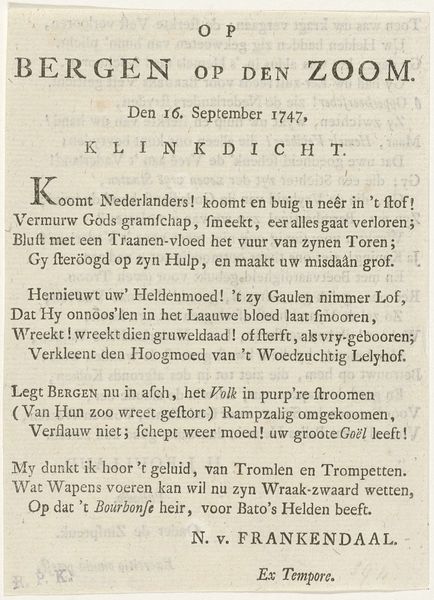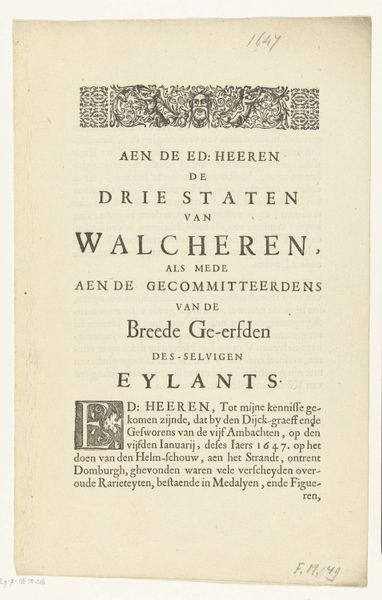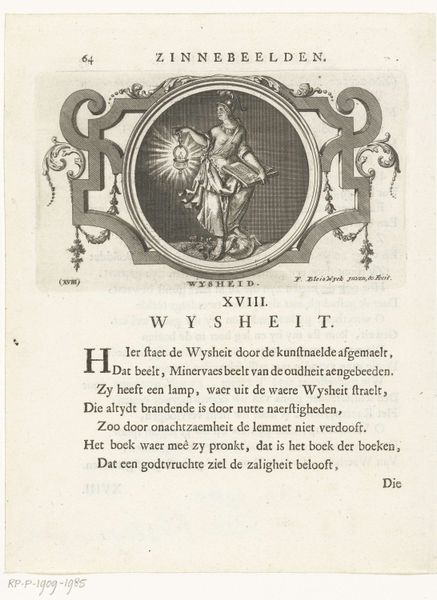
graphic-art, print, typography, engraving
#
portrait
#
graphic-art
#
baroque
# print
#
typography
#
engraving
Dimensions: height 165 mm, width 217 mm
Copyright: Rijks Museum: Open Domain
Curator: This piece, dating from after 1647 and currently residing at the Rijksmuseum, is a print by Frederick Bloemaert. Its primary feature seems to be dense, almost overwhelming, text, but is punctuated by some compelling figuration. Editor: Overwhelming is a good word. At first glance, I'm hit by the density. It feels imposing, like confronting a historical document rather than a work of art. The baroque figures at the top are dramatic, yes, but almost crushed by the sheer weight of typography. Curator: The layering of graphic elements indeed generates a particular kind of energy here. Considering it is an engraving using typography, the function is as much political as it is purely aesthetic, don’t you think? Its immediate social context— likely reproduced and circulated to further endorse an ideological argument about the place of "Staat en Kerk" in governance… Editor: Absolutely, you can feel the propagandistic heft. It's fascinating how Bloemaert balances portraiture with political messaging and poetic declarations. You have the central portrait framed as powerful, yet the print’s function leans towards broad communication, disseminating specific sentiments in accessible language…or at least accessible to literate people. Curator: The act of distribution and accessibility shapes my understanding as well. Think of it reproduced, distributed, consumed and subsequently internalized on many levels... How are we to process the act of reception beyond surface consumption? Editor: That density serves a purpose, though, doesn't it? It's trying to convince with sheer volume, embedding the message through repetition and layers of textual argument. Artistically, it feels…less refined. Perhaps intentionally so; sacrificing visual elegance for forceful persuasion. It's a working document. Curator: Precisely. And it compels us to recognize "craft" itself not as some purely decorative exercise but labor and skill deployed within systems of power, networks of dissemination. Editor: I suppose, I've revised my initial judgement of 'imposing' toward a richer understanding. It demands slow engagement – a piece less about immediate aesthetic joy, than historical witness.
Comments
No comments
Be the first to comment and join the conversation on the ultimate creative platform.

